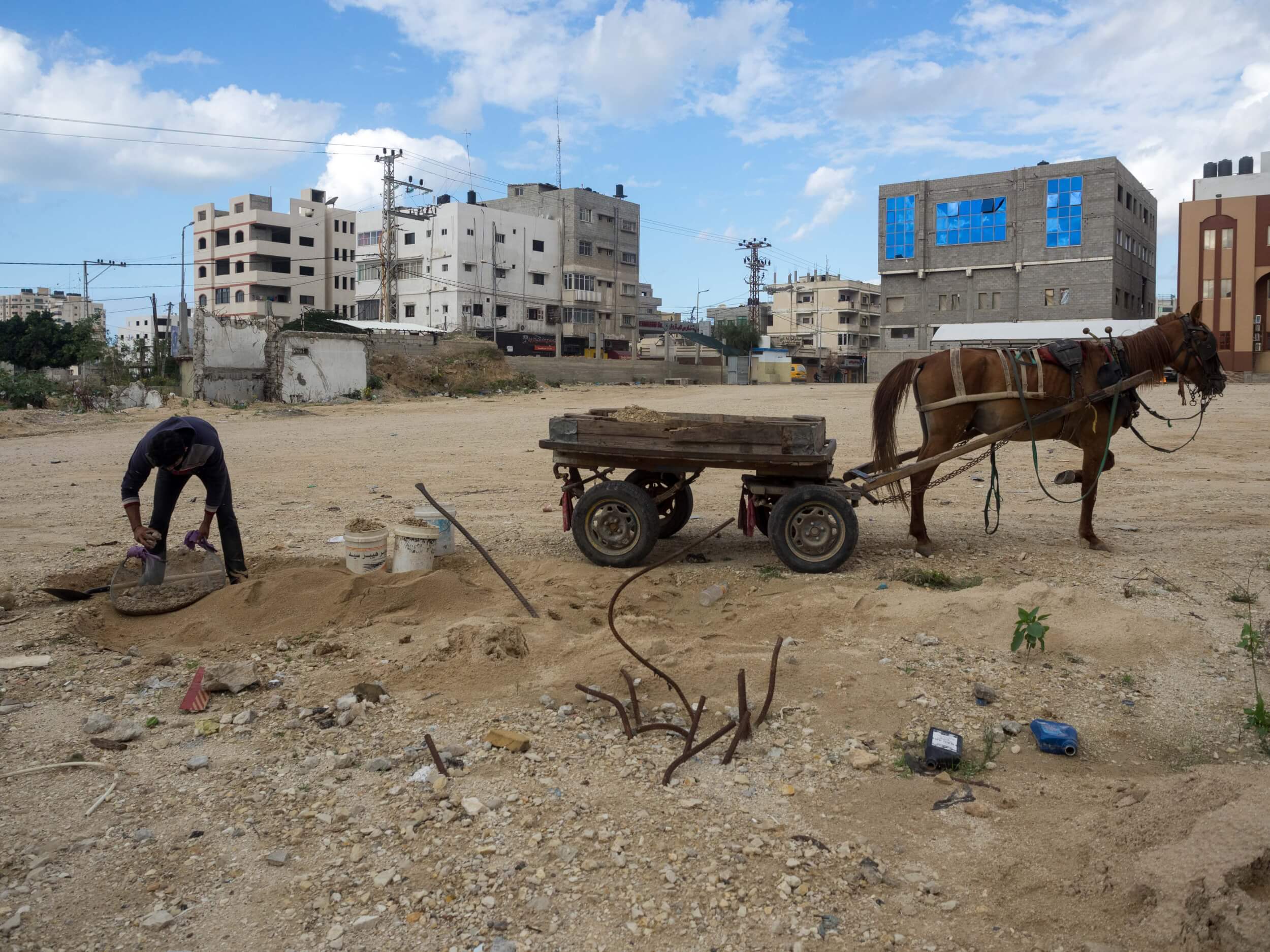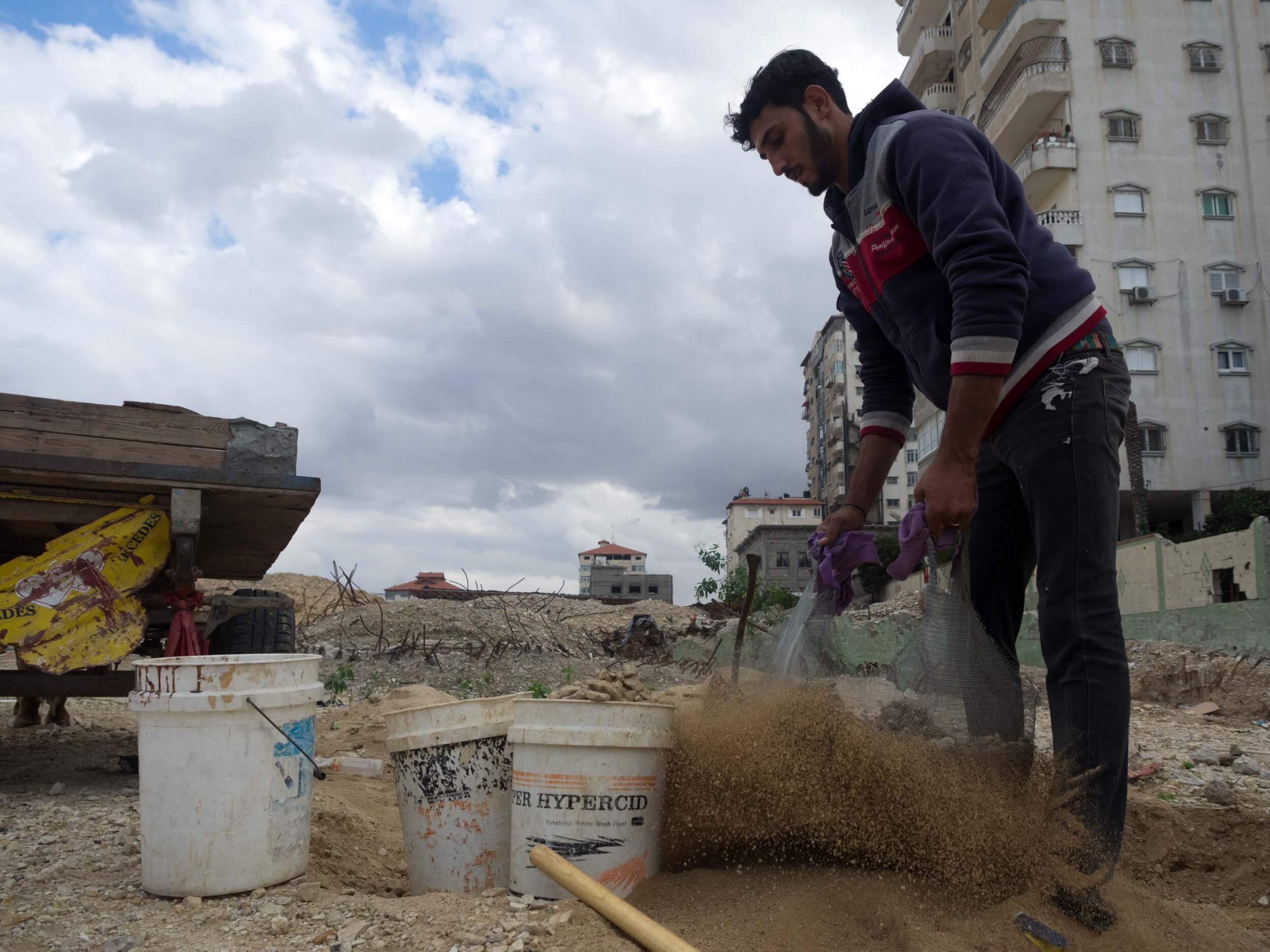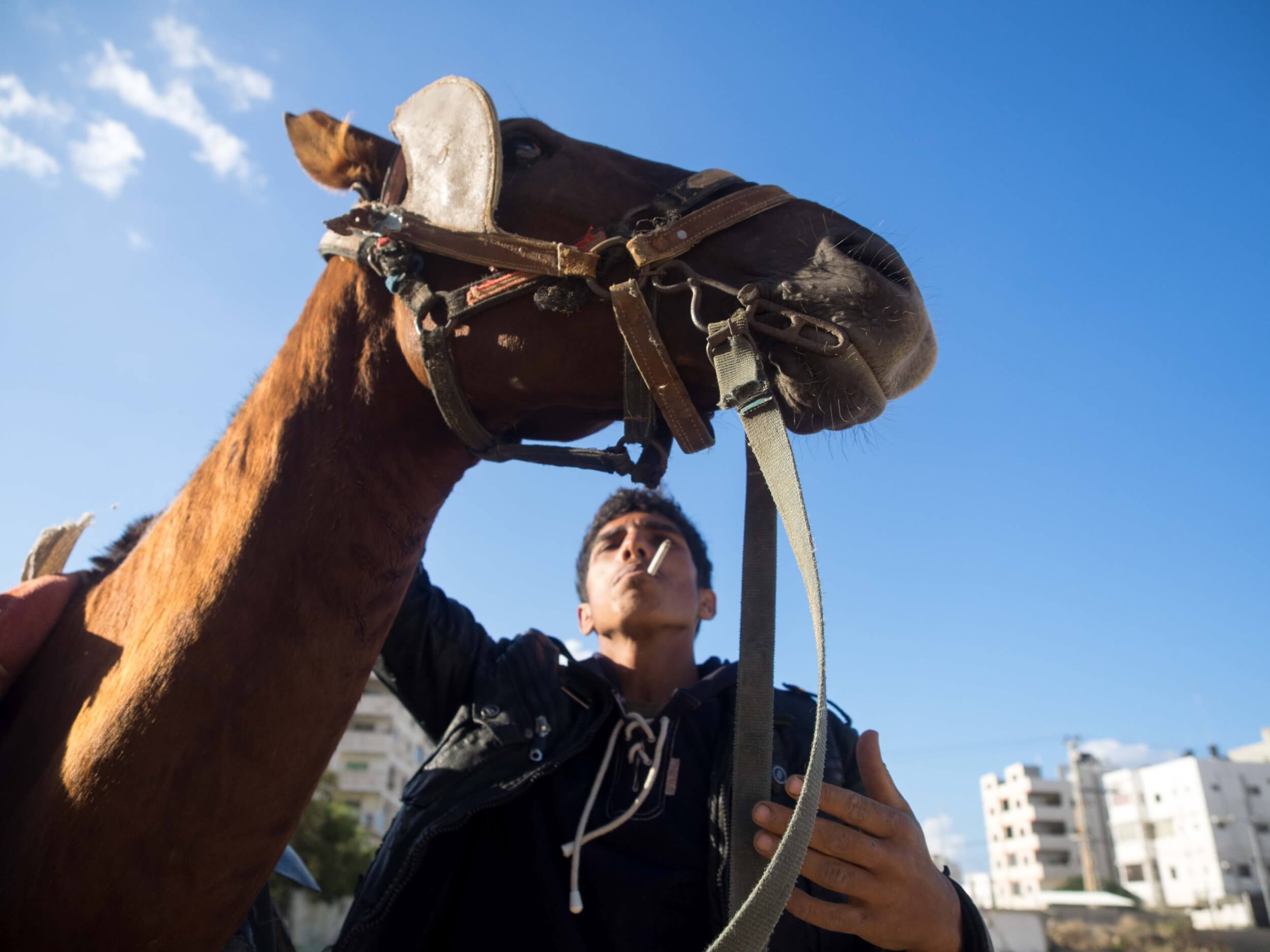Eight years of siege and three wars in six years have left the Gaza Strip in a state of perpetual disaster with no end in sight. After this summer’s assault, tens of thousands of Palestinians are sentenced to living in rubble wastelands that are scarcely recognizable from the thriving neighborhoods they once were.
“The survivors are the real victims of war,” Hamza Saftawi, 23, said. “They have to live in the aftermath.”
Moaeen Naim Maqbel, 54, and 13 of his family members live in a half-standing home in Shujaiya. Having worked inside Israel since age 15, the home Maqbel built over a span of decades was hit by Israeli shelling in 2008/2009, 2012, and was irreparably damaged this summer.
His family now spends their nights outside in the dark. A small fire they built provides minimal warmth and light. “I worked in Israel starting when I was 15 and saved money for this house. It was hit in 2008/2009, 2012, and now it’s destroyed,” Maqbel told me.
From where they sit, the lights of the Israeli kibbutz and military base of Nahal Oz are visible just several hundred meters away. “We can see they have electricity even on their borders where there aren’t any people. But there are people living here without electricity,” he explained. “We aren’t human, or what? Our life is hell. We are living like animals — maybe the cows live better than us.”
Despite the $5.4 billion promised by the international community in Cairo last month, Israel has blocked the delivery of vital construction materials. Since the August 26th ceasefire, less than 1/1000th of the construction materials Palestinian officials estimate are needed to rebuild have actually entered the coastal enclave.
With no prospects of rebuilding with imported materials, Palestinians comb through rubble in efforts to salvage any materials to rebuild. Throughout areas that were bombed, rebar skeletons of buildings are picked clean of concrete before teams of two workers use a basic machine to straighten each piece.

For the group of men who work ten-hour shifts combing the rubble of the Zafer Four tower in Gaza City, this labor is the best option available. Thaer Ayman Abdel Aziz Qassem, 20, spoke to me while he worked, unable to take a break. “My wages from this work aren’t sufficient to live. I wake up and start working at 6 am and finish at 4 pm. Every day is the same. While we work, we find clothes, jewelry and money. People come to check for their belongings from what we find. They left everything when they fled.”
As the siege prevents rebuilding efforts, the war further exacerbated the economic crisis resulting from Israel’s eight-year siege. With unemployment at 55%, others resort to any work they can to survive.

Mohammed Majd Hosni Al-Madhoun, 23, from the Gaza City area of Sheik Radwan, sifts through dirt to collect rocks that he gathers into plastic buckets. Due to the ban of construction materials, he is sometimes able to sell the rocks to construction companies. “I used to work at sea and then I was a construction worker but now there is no work,” Al-Madhoun said. “I started to search for work in any place I could find it. I work every day that there is no rain but I can’t make a living selling rocks because it’s physically impossible to work enough. For a day of work, sometimes I earn five dollars, sometimes twenty dollars and something nothing. I am newly engaged and need to work in order to save money for my wedding.”

In the next field over, Yusef Abu Kader and his cousin Saber Abu Kader, both 18, cut pieces of rebar remaining from buildings that were bombed. “I’ve worked since I came to this life — since I was eight years old,” Yusef Abu Kader lamented before adding, “But don’t be sad for us.”
“We work in places that were bombed to collect scrap metal. Together we earn about five dollars for a day of work,” Yusef Abu Kader said.

While Israel enforces the siege — with the help of Egypt’s coup regime — and commits daily violations of the August ceasefire agreement, there is little hope for improved conditions in the Gaza Strip.



@- Dan Cohen,
Thanks for the report on the aftermath of Operation ‘As Much As We Can Destroy.’
Q: Israel has blocked the delivery of vital construction materials.
R: And the Apartheid State’s raison d’être this time is…?
Dan Cohen, many thanks for your indefatigable work. You are a bright and shining star of a human being, always reminding me how to be a better person.
Take good care of yourself.
“Chef, the the next batch’s ready!”
— Beyond the visa provisions, the U.S.-Israel Strategic Partnership Act increases the value of emergency U.S. weaponry kept in Israel by $200 million, to a total of $1.8 billion —
‘Let the games begin…’.
how dare they? israel will find out where that basic machine is and bomb it.
As you make your bed, so you lie on it.